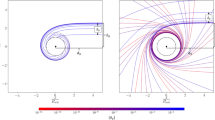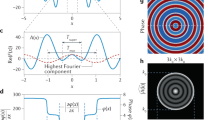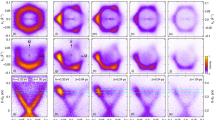Abstract
MR. ORANGE'S point is, of course, that we should use the one object in the field of which the light has not been through the sun's gravitational field in order to get rid of the Einstein disturbance; also of the suggested refraction by gases near the sun. I have talked the matter over with Mr. C. Davidson, who agrees with me that nothing is to be done with existing photographs in this direction—the exposures where too long, and the moon's limb too ill-defined; but it is possible that in future eclipses short exposures, given specially for the purpose, might vield something of interest. The chief difficulty is that we do not know the moon's dark photographic diameter. It cannot be assumed equal to the bright photographic diameter, for irradiation (and other similar actions) go in the reverse direction.
This is a preview of subscription content, access via your institution
Access options
Subscribe to this journal
Receive 51 print issues and online access
$199.00 per year
only $3.90 per issue
Buy this article
- Purchase on SpringerLink
- Instant access to full article PDF
Prices may be subject to local taxes which are calculated during checkout
Similar content being viewed by others
Author information
Authors and Affiliations
Rights and permissions
About this article
Cite this article
CROMMELIN, A. Deflection of Light during a Solar Eclipse. Nature 105, 8 (1920). https://doi.org/10.1038/105008c0
Issue date:
DOI: https://doi.org/10.1038/105008c0



